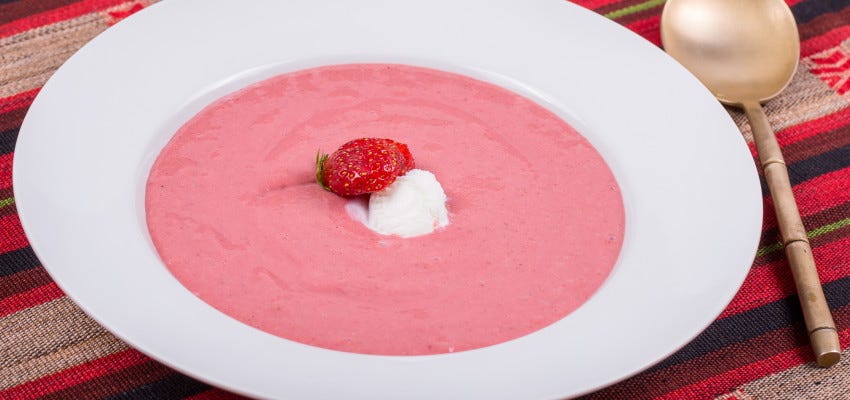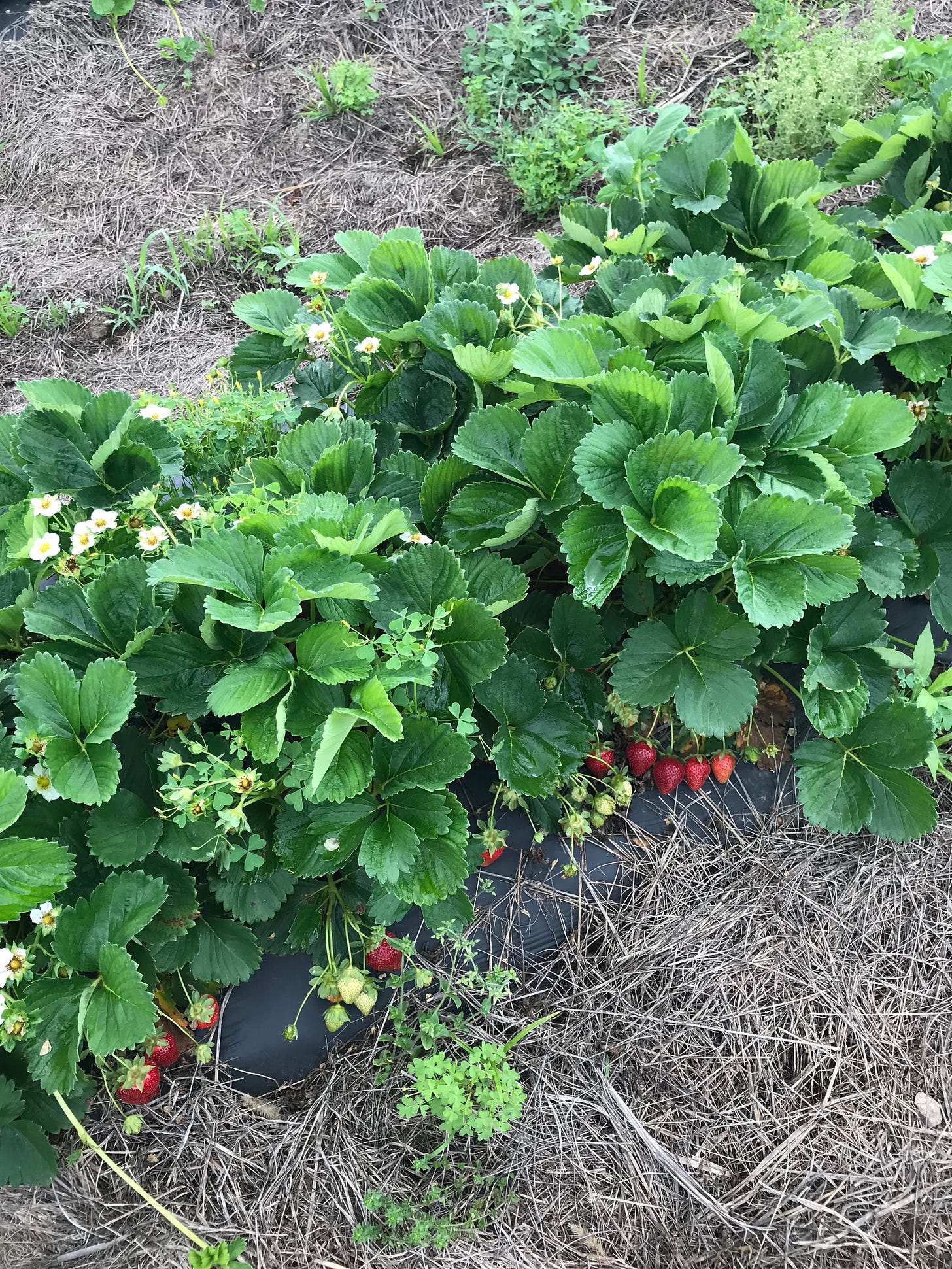Strawberry Soup
A simple truth: cold dishes that feature a single ingredient are more dependent on the intrinsic taste of that ingredient than hot dishes featuring one item. For the longest time I could not understand the charm of strawberry soup, a chilled soup that would be served at southern lunches, particularly in households with some German or Scandinavian heritage. Yes it was red and cold, but it was a rather messy soup, often over-sugared, or over-charged with lemon or orange juice. There was a rather surprising lack of strawberry fragrance. On the whole if I wanted a pronounced sweet/sour/cold experience I’d opt for the slice of strawberry rhubarb pie. But my prejudices were upset by a chill bowl of honey smooth, perfumed strawberry soup of such sublime poetry that I wondered how I could have been so dense as to keep such beauty at a distance in my life.
The difference—well there were several, but the greatest was the variety of strawberry being cooked into a fruit slurry. I had been feeding on the puree of the standard crop berries of my region—Chandler, Cardinal, Earliglow, and Sunrise. These intensely red, firm, and productive berries are ideal for u-pick fields, for shipping, and for selling, since the large, regular red berries are big, and eye catching. But the best tasting and fragrant of the strawberries are not the major crop varieties. They are specialty types: Candy Cane, Fraises Des Boise, Gariguette, Fairfax, Reine des Vallees, Capron, and for the truly adventurous, the White Carolina Pineberry (a strawberry that tastes of Pineapple—I suppose one makes a white soup out of this!).
You put them in cold water first, then heat, stirring and medium heat, cooking until they can pass through a sieve. Thicken with arrowroot starch if you want the red perfect. Don’t make a tapioca and pour in juiced strawberries. Sweet modestly with sugar. Lace it with lemon juice. Chill. Slice whole strawberries and pattern the top. Maybe a little cream for a cappuccino swirl. Some like a sprinkle of mint leaf.
Strawberry Soup emerged in American consciousness as a novelty dish served at strawberry festivals. These festivals first appear in the United States in the later 1840s. Interestingly the first organizers of these festivals, in Newark, NJ, Columbus Ohio, and Washington D.C. were aware of the Strawberry feasts of the Seneca People, and the celebrations that the Natives of the Six Nations had about the fruits. One project in these festivals was to prepare strawberries in as many different ways as the organizers could imagine. “The dinner began with strawberry soup and strawberry bread. Strawberry fritters, strawberry shortcake and strawberries with ice cream were served and there was strawberryade to drink” [“Trenton Society,” Trenton Evening Times (June 22, 1895), 5]. Those with Germanic backgrounds might recall that William Vollmer’s The United States Cookbook (1859--a very Germanic collection despite its name) included a recipe under the “Cold Soups” section.
pp. 28-29
The wine mentioned in Vollmer’s recipe was white; a Riesling I imagine. I’ve had a cherry soup with gewürztraminer that made my eyebrows tingle with delight.
There was one controversy attending early strawberry soup: should the strawberries be cooked or not. In the 21st century the idea of cooking the strawberries seems close to abomination—making the soup like strawberry jam. But in the 19th century there was a violent debate among dieticians about raw foods, and raw fruits in particular. Among the fringe there was a dyspepsia = death panic, and a strong conviction that raw strawberries would set your gastric juices percolating with noxious vapors. (No American child face with a field of ripe strawberries every had this trepidation.)
Sweet Charlie Strawberries, Green Door Farm, Nashville TN
Most strawberries after they’ve been through the blender produce a pink rather than a red soup. If the strawberry soup is intensely red, someone’s been importing rhubarb into the mix or been squeezing the rubber bulb on the food coloring dropper.







